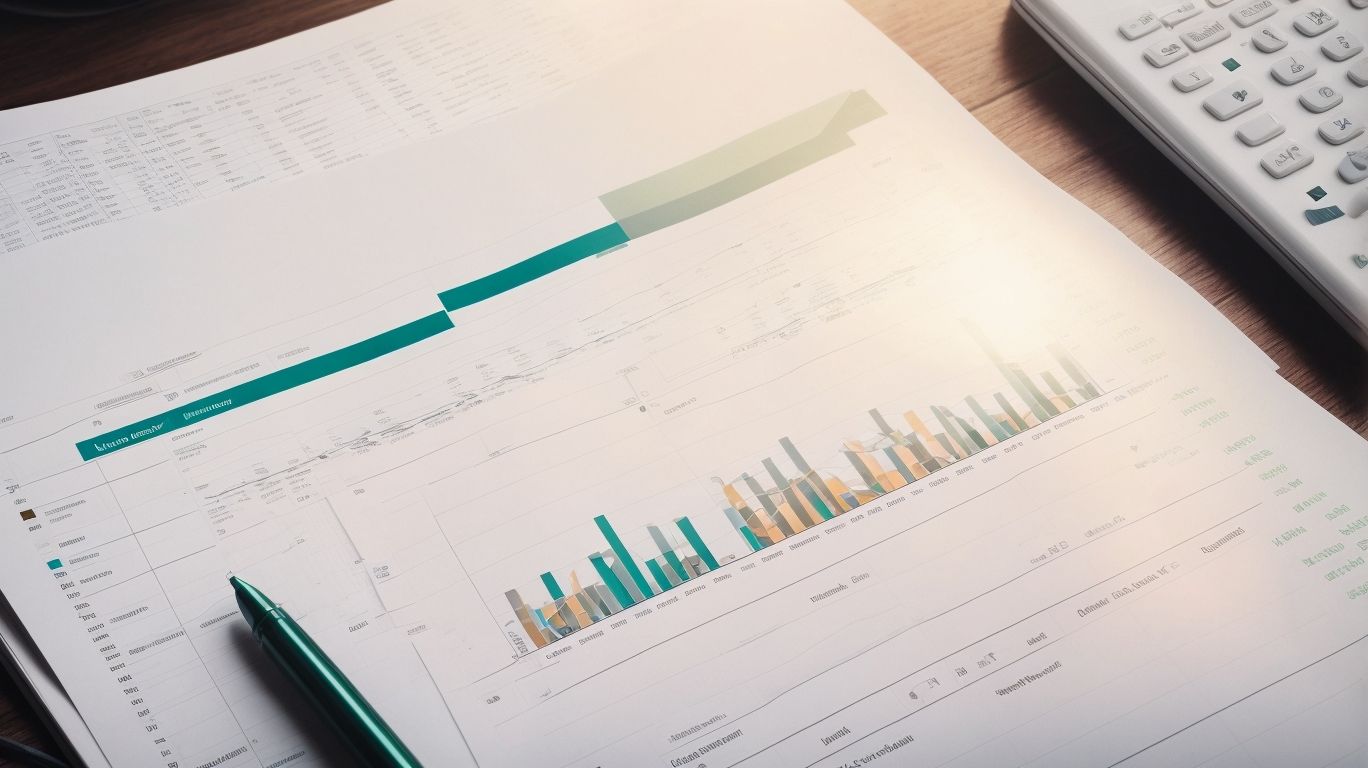Forecasting trends is a critical aspect of decision-making and planning in various fields, including business, finance, marketing, and economics. Excel’s regression analysis tools provide a powerful framework for analyzing historical data and making predictions about future trends. Regression analysis allows us to understand the relationship between two or more variables and use that understanding to forecast outcomes.
Regression analysis is a statistical technique that examines the relationship between a dependent variable and one or more independent variables, also known as predictors or regressors. It helps identify the strength and direction of the relationship, enabling us to make predictions based on the observed data.
Regression analysis is particularly useful for forecasting because it allows us to examine patterns and trends in historical data, and then use that information to anticipate future values. By identifying the key predictors and their impact on the dependent variable, we can build models that accurately forecast future trends.
Excel provides a range of regression analysis tools that simplify the process of analyzing data and making predictions. With these tools, you can perform regression analysis seamlessly within the familiar Excel interface.
To use Excel’s regression analysis tools effectively, a step-by-step guide is essential. This guide walks through the process of performing regression analysis in Excel, from organizing and preparing the data to interpreting the results. It also covers common mistakes to avoid during the analysis to ensure accurate and reliable predictions.
Once the analysis is complete, interpreting the regression analysis results becomes crucial. Understanding the coefficients and the intercept helps determine the direction and magnitude of the relationship between variables. measuring the accuracy of the regression model through metrics like R-squared and adjusted R-squared allows us to evaluate the reliability of the predictions.
Finally, the true power of Excel’s regression analysis tools lies in their ability to forecast trends. By applying regression analysis to predict future trends, we can make informed decisions and plan for potential outcomes. However, it is important to continually evaluate and adjust the forecasted trends as new data becomes available to ensure the accuracy and relevance of the predictions.
To illustrate the practical applications of forecasting trends using Excel’s regression analysis, case studies and examples are provided. Real-world scenarios demonstrate how regression analysis can be used to predict sales figures, demand for products, financial performance, or any other variable of interest, helping businesses and organizations make informed decisions based on reliable forecasts.
By understanding and leveraging Excel’s regression analysis tools, you can unlock valuable insights from your data and gain a competitive edge in forecasting future trends.
Understanding Regression Analysis

Photo Credits: Exceladept.Com by Kenneth Wright
Regression analysis is a statistical technique used to gain a clear comprehension of the relationship between variables. It involves determining how one dependent variable is affected by changes in one or more independent variables. By analyzing historical data, regression analysis can assist in predicting future trends and making well-informed decisions. Achieving a solid understanding of regression analysis requires familiarity with crucial concepts such as regression models, coefficients, residuals, and significance tests. To improve the accuracy of the analysis, it is vital to select the most appropriate regression model and accurately interpret the obtained results. A pro-tip: Continuously re-evaluate your regression model to ensure its validity and adapt it as necessary.
What is Regression Analysis?
Regression analysis is a statistical technique used to understand the relationship between a dependent variable and one or more independent variables. What is Regression Analysis? It helps to identify trends and patterns in data, making it useful for forecasting future trends in business. By analyzing historical data in tools like Microsoft Excel, regression analysis can provide insights into future outcomes. It calculates a regression equation and measures the strength of the relationship with the R-squared value. What is Regression Analysis? A pro-tip is to ensure data accuracy and avoid missing points when conducting regression analysis, as this can impact the reliability of the results.
Why is Regression Analysis Useful for Forecasting?
Regression analysis is useful for forecasting because it allows businesses to identify and understand the relationship between variables. By analyzing historical data, regression analysis can help businesses identify trends and patterns, allowing them to make predictions about future outcomes. This can be particularly valuable for businesses looking to scale up and make informed decisions based on reliable data sources. By using tools like Microsoft Excel’s regression analysis, businesses can perform step-by-step analysis, interpret results, and apply forecasting techniques. Regression analysis provides businesses with a powerful tool to forecast trends and make accurate predictions for planning and decision-making.
History provides numerous examples of how regression analysis has been used to forecast trends and make accurate predictions. For instance, regression analysis played a crucial role in predicting the market demand for personal computers in the 1990s, leading to better inventory planning and cost-saving decisions. Similarly, regression analysis has been used in weather forecasting to predict future weather patterns, enabling better preparations for natural disasters and saving lives. The ability to forecast trends using regression analysis has had a significant impact on various industries, empowering businesses to make data-driven decisions and anticipate future outcomes.
Using Excel’s Regression Analysis Tools

Photo Credits: Exceladept.Com by James White
Looking to unlock the power of Excel’s regression analysis tools? Get ready to delve into the world of data analysis as we explore the functionality and benefits of using Excel’s regression analysis tools. From a step-by-step guide on performing regression analysis to avoiding common mistakes, we’ll equip you with the knowledge and skills to confidently interpret regression analysis results. So, grab your spreadsheet and let’s dive into the fascinating world of predictive trends with Excel’s regression analysis tools!
Step-by-Step Guide to Performing Regression Analysis in Excel
- Collect and organize your data: Ensure you have accurate and relevant data for both the dependent and independent variables.
- Open Excel and input your data: Create two columns for your variables and enter your data accordingly.
- Insert Scatter Plot: Select your data points and insert a scatter plot to visualize the relationship.
- Add a trendline: Right-click on the scatter plot and add a trendline. Choose the regression option.
- Interpret the results: The regression equation and R-squared value will provide insights into the relationship between the variables.
- Predict future trends: Use the regression equation to forecast future values based on the historical data.
- Evaluate and adjust: Continuously monitor and adjust your forecast as new data becomes available.
By following this Step-by-Step Guide to Performing Regression Analysis in Excel, you can effectively forecast trends in your business.
Common Mistakes to Avoid in Excel Regression Analysis
When conducting Excel regression analysis, it is important to avoid common mistakes to ensure accurate results:
- Data Accuracy: Ensure that your data is correct and free from errors. Double-check for any missing or incorrect data points.
- Missing Points: Be cautious of any missing data points as they can affect the accuracy of regression analysis. Fill in missing values or consider alternative methods of handling missing data.
- Manual Data Entry: Avoid manually entering data into Excel as it can introduce human errors. Instead, use automated methods or import data from reliable sources.
It is crucial to be mindful of these common mistakes to achieve reliable and meaningful results in Excel regression analysis.
In a similar vein, history is riddled with examples of common mistakes made in various fields. For instance, in the field of medicine, bloodletting was a commonly practiced treatment for centuries despite its lack of effectiveness. It was not until scientific advancements and evidence-based medicine emerged that this common mistake was rectified, leading to improved patient outcomes. This example highlights the importance of being aware of and learning from common mistakes to drive progress and make better decisions in various domains.
Interpreting Regression Analysis Results
“`
Interpreting regression analysis results is crucial for understanding the relationship between variables and making accurate predictions.
- Examine the coefficients: Coefficients indicate the direction and magnitude of the relationship between variables. A positive coefficient means an increase in one variable leads to an increase in the other, while a negative coefficient indicates an inverse relationship.
- Assess significance: Significance tests determine if the coefficients are statistically significant. A low p-value suggests the relationship is meaningful and not due to chance.
- Evaluate R-squared: R-squared measures the proportion of the variance in the dependent variable explained by the independent variables. A higher R-squared indicates a better fit.
- Analyze residuals: Residual analysis helps assess the model’s accuracy by examining the distribution of the errors. Random and normally distributed residuals indicate a good fit.
Understanding these results allows researchers and analysts to draw meaningful insights and make informed decisions based on the interpreting regression analysis results.
In a real-world example, a retail company used regression analysis to examine the relationship between advertising spend and sales. By interpreting the regression analysis results, they found a positive coefficient, indicating that an increase in advertising spend led to higher sales. This insight allowed the company to optimize their advertising budget and allocate resources effectively, leading to increased revenue and profitability.
Forecasting Trends with Excel’s Regression Analysis

Photo Credits: Exceladept.Com by Justin Adams
Forecasting trends using Excel’s regression analysis opens doors to accurate predictions and informed decision-making. In this section, we dive into the practical application of regression analysis, unveiling how it enables us to forecast future trends. Get ready to uncover the power of data-driven insights and learn how to evaluate and adjust forecasted trends for maximum effectiveness. No crystal balls needed, just Excel and a keen eye for pattern analysis.
Applying Regression Analysis to Predict Future Trends
Applying regression analysis to predict future trends is an indispensable tool for businesses. By leveraging historical data and identifying patterns, businesses can make more informed decisions about inventory planning, financial forecasting, and market trends. In Excel, the regression analysis tool facilitates effortless and precise prediction modeling. It is crucial to ensure data accuracy, prevent missing points, and utilize up-to-date forecasting techniques. By evaluating and adjusting the projected trends with cloud-synced inventory planning software, businesses can adapt and consistently stay ahead in a dynamic market. Applying regression analysis to predict future trends offers businesses a glimpse into the future and enables them to make strategic decisions to drive success.
Evaluating and Adjusting the Forecasted Trends
Evaluating and adjusting the forecasted trends is of utmost importance when it comes to making accurate predictions and effective decisions. In order to achieve this, it is crucial to regularly review and compare the forecasted trends with the actual data after employing regression analysis in Excel. This helps in identifying any discrepancies that may be present. By thoroughly analyzing these discrepancies, necessary adjustments can then be made to enhance the accuracy of future forecasts.
To further improve the reliability of predictions, it is advisable to utilize inventory planning software that offers cloud synchronization. This ensures that the forecasting data remains up-to-date, thereby increasing its credibility. In addition, a valuable pro-tip for evaluating and adjusting forecasted trends is to continuously monitor the market trends as well as consumer behavior. This helps in staying well-informed and enables making any necessary modifications to the forecasts accordingly.
Case Studies and Examples

Photo Credits: Exceladept.Com by Dylan Miller
Looking to understand the practical applications of forecasting trends with Excel’s regression analysis? Dive into our case studies and examples, where we explore real-world scenarios and demonstrate the power of this analytical tool. Discover how businesses leveraged Excel’s regression analysis to make data-driven decisions, optimize resource allocation, and project future trends. Get ready to uncover the success stories and learn how you can harness the forecasting capabilities of Excel for your own analysis and forecasting needs.
Real-world Applications of Forecasting Trends using Excel Regression Analysis
Real-world Applications of Forecasting Trends using Excel Regression Analysis are abundant and highly beneficial for businesses of all sizes. By utilizing Excel’s regression analysis tools, companies can obtain valuable insights and plan for the future. For instance, retail businesses can employ regression analysis to forecast consumer demand and optimize inventory levels, leading to cost savings and waste reduction. In the finance industry, regression analysis is applicable in predicting stock prices and developing investment strategies. Additionally, companies can utilize regression analysis to assess the impact of marketing campaigns on sales and adjust their strategies accordingly. Excel’s regression analysis tools empower businesses by providing them with valuable insights and supporting data-driven decision-making.
Frequently Asked Questions
How can Excel’s regression analysis tools help in forecasting trends?
Excel’s regression analysis tools can help in forecasting trends by identifying relationships between variables and making predictions based on past data. By analyzing the relationship between factors that predict demand or sales, businesses can gain insights into future trends and make more informed decisions.
What is the significance of the R-squared value in regression analysis for forecasting?
The R-squared value in regression analysis indicates the strength of the relationship between variables. In the context of forecasting, a higher R-squared value suggests that the regression model is a better fit for the data, increasing the reliability of the predictions made using the regression equation.
How can Excel’s trend analysis tools be used for forecasting?
Excel’s trend analysis tools, such as trend lines, allow users to visualize data patterns and predict future trends. By adding a trend line to their data, businesses can gain insights into the overall trend and make projections based on historical data.
How does Excel help in interpreting the results of business forecasting?
Excel provides various tools and formulas to help users interpret the results of business forecasting. By utilizing features like line charts, data visualization can aid in understanding trends and patterns. Additionally, Excel allows for customizing and tweaking visual forecasts to enhance interpretation and decision-making.
What advantages does manual data sync in Excel offer for forecasting?
Manual data sync in Excel allows businesses to have more control over their forecasting process. By manually updating and syncing data, businesses can ensure that their forecasts are based on the most up-to-date information, which is crucial for accurate predictions and effective decision-making.
How can Excel’s forecasting capabilities save money for businesses?
Excel’s forecasting capabilities can save money for businesses in multiple ways. Firstly, Excel is priced lower compared to other specialized forecasting tools, providing cost savings. Additionally, by utilizing Excel’s inventory planning features, businesses can optimize their purchasing budget more thoughtfully, leading to cost savings in inventory management.
